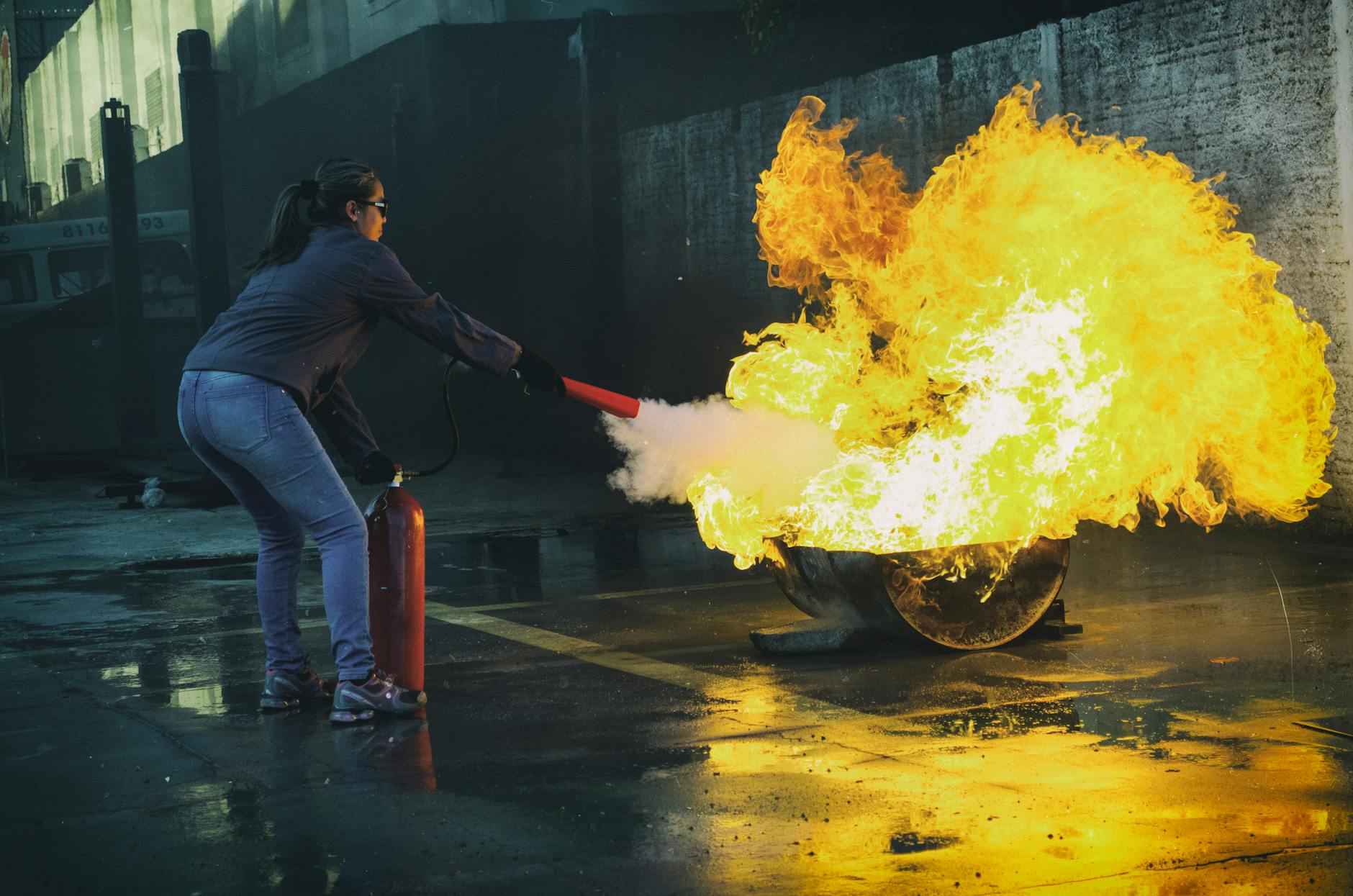
Fire Safety HSE Training
🔥 Introduction: Why Fire Safety Matters
“Look around this room right now. In just 30 seconds, a small spark can become an uncontrollable inferno. Fire doesn’t discriminate—it can wipe out worksites, offices, and homes in minutes.”
*”Today’s training will teach you three lifesaving skills:
- How to STOP fires before they start
- How to RESPOND when alarms sound
- How to ESCAPE when seconds count”*
[Hold up fire extinguisher]
“By the end, you’ll be able to use this confidently—but more importantly, you’ll know when NOT to use it.”
🔍 Section 1: Fire Science Basics
“Understanding fire is your first defense:”
The Fire Triangle (Visual Aid)
✓ Heat (Sparks, friction, electrical faults)
✓ Fuel (Paper, chemicals, dust, even metal!)
✓ Oxygen (Airflow can turn smolder to blaze)
“Remove just one element, and the fire dies. That’s exactly what our safety measures do.”
🚨 Section 2: Common Workplace Fire Hazards
“These are the top culprits we battle daily:”
A. Electrical Hazards
- Overloaded outlets
- Frayed cords (show examples)
- Equipment near flammables
B. Hot Work Risks
- Welding sparks
- Grinding without fire watch
C. Chemical Dangers
- Improper storage
- Spill reactions
[Pass around damaged equipment]
“This melted power strip caused a $2M warehouse fire. Notice the warning signs we missed?”
🧯 Section 3: Fire Extinguisher Mastery
“Remember PASS—but first, ask: Should I even fight this fire?”
DECISION FLOWCHART:
1️⃣ Is the fire smaller than a trash can?
2️⃣ Do you have clear escape route?
3️⃣ Is the extinguisher right for the fire type?
“If ANY answer is no—EVACUATE immediately.”
Hands-On Demonstration:
- Pull the pin
- Aim at the base
- Squeeze handle
- Sweep side-to-side
“Notice I’m backing up as I spray? Fires can reignite!”
🏃 Section 4: Evacuation Like Your Life Depends On It
“Smoke kills faster than flames. Practice these survival tactics:”
Evacuation Essentials:
✔ Know TWO exits (Primary/alternate)
✔ Crawl under smoke (demo low stance)
✔ Test doors (Back of hand check)
✔ Never use elevators
✔ Assembly point accountability
[Show thermal image video]
“See how fast heat spreads? That’s why we drill twice a year—muscle memory saves lives.”
🚧 Section 5: Prevention Daily Habits
“Fire safety is everyone’s 24/7 job:”
5-Second Safety Checks:
- Flammables stored properly?
- Exit paths clear?
- Machines powered down?
- Smoking only in designated zones?
“Report hazards immediately—no ‘someone else will handle it.’”
⚠️ Section 6: Special Scenarios
“When standard rules don’t apply:”
Chemical Fires → Evacuate & seal area
Electrical Fires → CO2 extinguishers ONLY
Person on Fire → STOP, DROP, ROLL (Never wrap in fabric!)
[Show lab fire blanket demo]
“This smothers flames—but only if used correctly.”
✅ Conclusion: Your Fire Safety Pledge
“Before we finish, repeat after me:
‘I will stay alert to hazards.
I will never block exits.
I will act fast when alarms sound.’”
“One final thought: The difference between a close call and a catastrophe is often one prepared person. Will that be you?”
Closing
“Great job! Remember: Complacency is fuel for disaster. Stay sharp out there!”
Electrical Safety Training: NFPA 70E & Arc Flash Hazards
Oil & Gas Industry Safety: H2S Awareness, Permit-to-Work, and Confined Space Entry
Construction Safety Training: Scaffolding, Excavation, and Working at Heights
30 Critical Safety Moments to Discuss in Meetings
❓ FAQs
Q: How often should extinguishers be inspected?
A: Monthly visual checks, professional servicing yearly.
Q: Can water put out all fires?
A: NEVER use on grease/electrical fires! (Show classification chart)
Q: What if I’m trapped during evacuation?
A: Seal doors with wet cloth, signal from window, stay low.
Q: Who investigates small fires?
A: EVERY fire gets reported—small ones warn of bigger risks.